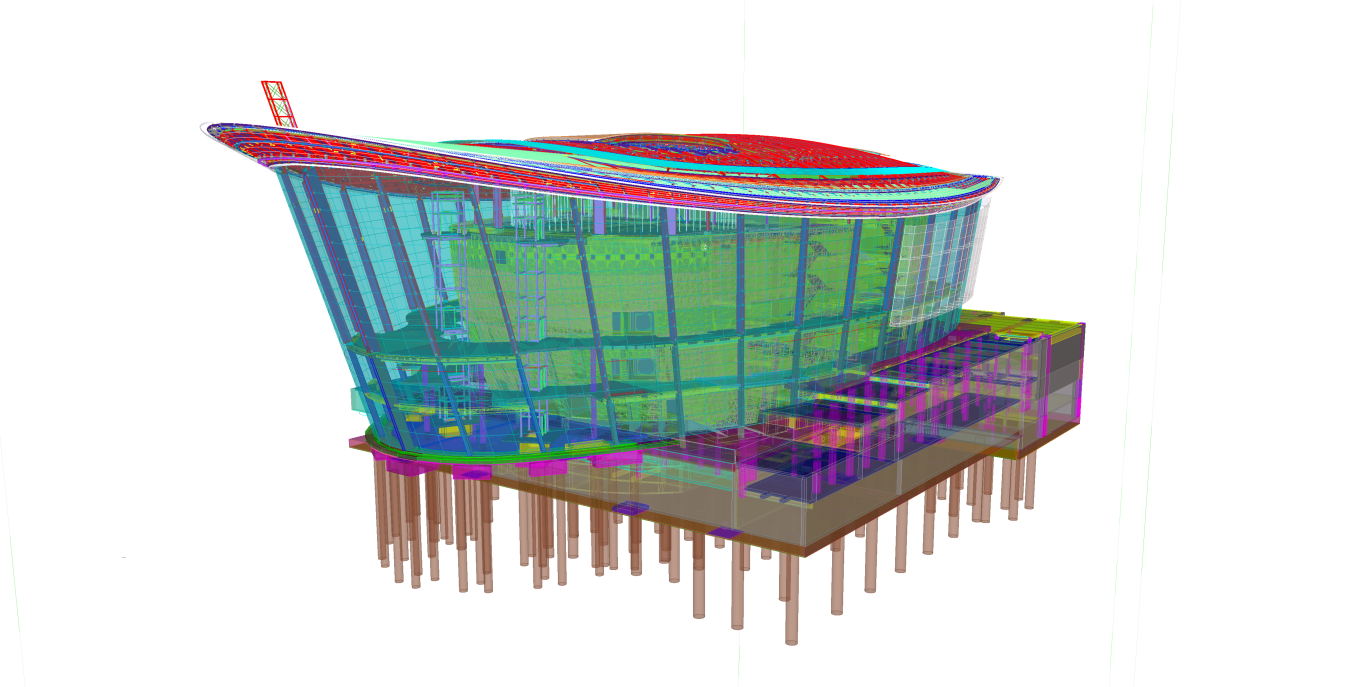The Opera House at Downtown Dubai
Set to become one of the most significant, vibrant and successful performing arts and entertainment centres in the Middle East


In OPERA HOUSE Project, the special challlenges are modelling the steelwork to suit the 3 Dimensional Roof Curvature with its complex node connections and including all the necessary requirements from various other trades such as Skylight supports, Gutter supports, Cladding soffit supports, Cladding perimeter nose supports, Mashrabia supports, BMU supports, Façade supports and Sky Garden supporting steelwork etc.
The complex geometry of the structure and the precise BIM coordination requirements make this project as one of the challenging projects for Eversendai. As always with Eversendai, this project was also successfully modeled and coordinated with all other trades and fabrication drawings were released in line with the project schedule.
Source: https://www.tekla.com/bim-awards/opera-house-downtown-dubai-ohdd#












